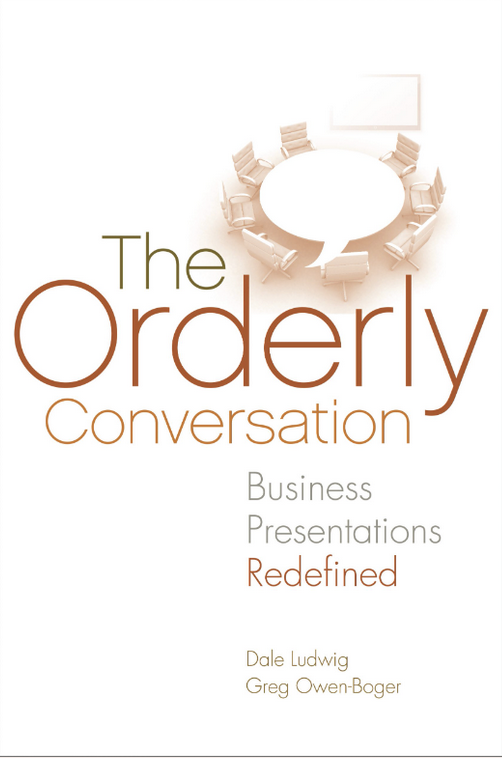
- Dale Ludwig Leadership
Composure is One of the Fifteen Facets of Executive Presence
This article is one in a series focusing on Executive Presence and how leaders can meet their potential through improved communication. Executive Presence is defined by Suzanne Bates in her book “All the Leader You Can Be: The Science of Achieving Extraordinary Executive Presence” as “The qualities of a leader that engage, inspire, align, and move people to act… By understanding how your intentions as a leader match up with perceptions, you can learn how to flex your style to gain trust, build alignment, lead change, inspire performance, and drive executional excellence.”
This article focuses on Composure, one of the 15 facets that make up a 3-dimensional leader.
Click here to gain a greater understanding of (a) executive presence in general and (b) the other facets that make up a well-rounded leader.
What is Composure?
Bates describes Composure, one of the fifteen facets of executive presence, as “proving to be steady in a crisis, able to calm and focus others, and to bring objectivity and perspective to critical decisions.” People with a healthy level of Composure are not only able to remain calm, but they also bring much-needed perspective to stressful situations.
Not to be confused with Restraint, which is a different facet in the executive presence model, Composure reveals itself in times of crisis. During an emergency, when others panic and flail, a leader with Composure calmly leads people out of the burning building.
How Composure Makes People Feel
People with a high level of Composure are appreciated for their ability to maintain a steady, controlled demeanor. Because of this, others feel comfortable working with them and may turn to them when emotions are high. A healthy level of Composure makes others feel:
- I trust you because you are always in control of your emotions.
- You make sensitive issues discussable, easing tension for others.
- You are able to discuss feelings in a constructive way, thereby making others feel comfortable doing the same.
- I am reassured because you are the calm in a storm.
Not Enough Composure
Someone who lacks Composure may seem impulsive or panicky. The effect of this is that:
- Others may be on pins and needles, unsure of what might happen next.
- People may avoid contact with you because they want to avoid an emotional outburst.
- Others may not trust you in times of uncertainty.
Specific Behaviors to Improve Perceptions of Composure
Here are some things you can do to improve the impressions you make in terms of Composure.
- Have a strong stance when challenged without being overly emotional.
- Be able to frame meetings from the perspective of others.
- Pause to offer a measured response.
- Listen carefully, without judgment or skepticism.
- Remain cool, calm, and collected.
- Encourage collaboration over conflict.
- Write as the voice of reason, providing clear context and specific recommendations.
Too Much Composure
When someone exhibits too much of a particular facet, it can become an overstrength. An overstrength often results in negative perceptions. Here are some downsides of an overstrength in Composure.
- Others may feel that you do not care about the issue being considered.
- You may shut down when decisions need to be made.
- You are seen as being hard to read, having a poker face.
- You may appear to lack empathy when the situation calls for it.
A Story About an Overstrength in Composure
Elena thought of herself as a serious professional. She worked hard to appear prepared, in control, and serious about her job. Her approach had to do with the experiences she had early in her career. During those years, she was often the only woman in a room full of men. The last thing she wanted to do was appear emotional in front of them. She wanted to be seen as a rational thinker, a woman who was fully capable of handling the stress of her job.
As she moved up through various positions, she noticed that the roles she excelled at were in high-pressure settings. Her calm nature served her well. When she became an executive, she took this approach with her. She was instrumental in bringing other women into roles that were traditionally held by men. What she didn’t know was that many of the people reporting to her—both men and women—felt that Elena kept them at arm’s length. She was difficult to read, often making people guess how she felt and never sensing she was fully supportive of their work.
What Elena learned over time, based on others’ feedback, was to let go of some of her Composure. Instead of holding herself back to appear completely buttoned up, she needed to let people know how she felt about their work. She needed to let herself do things that would have seemed, at the beginning of her career, too “emotional” or “unbusinesslike.”
Over time, she learned to share her feelings and be more “human,” which was the way she jokingly referred to her new leadership approach.
During an executive-level meeting, the team discussed their need for an updated emergency response plan. It was important that they be prepared in the off chance something catastrophic happened. It was agreed that Elena, given her steady hand and calm demeanor, would head crisis communication should the need arise.
Sure enough, one of the company’s retail locations suffered a terrible fire, and sadly, an employee lost her life. Several others were badly injured. The leadership team was devastated, but everyone, including Elena, followed the emergency response plan.
That evening, the mayor, fire chief, and Elena held a press conference. When it was Elena’s turn to speak on behalf of the company, she forgot what she’d learned about her overstrength in Composure. She forgot to be “human.” She related the facts of the accident in her calm, steady way, showing no emotion when naming the victim. She went on to share condolences with the victim’s families, but she did so without expressing her feelings. The empathy she felt inside was hidden by her matter-of-fact delivery.
Driving home after the press conference, she was flooded with emotion, and against her better judgment, she turned on the radio. Covering the accident, one of the local news hosts commented on how professional, yet cold, Elena had seemed. While she was proud of herself for holding it together, she realized she’d fallen back into her old patterns. She told herself that she needed to do better.
Some Facets Ride Together
Often, when we lean into particular facets (or pull back from them), other facets “come along for the ride.” In Elena’s case, her overstrength in Composure shows up as lacking in Concern, Resonance, and Demeanor.
Final Thoughts About Composure
Composure is in the Substance dimension in the Bates model, which means that it is a facet cultivated over your career that helps build credibility and is relevant to your social role as a leader. These facets include the knowledge and wisdom you have developed, your ability to synthesize information and apply it to the here and now, as well as your ability to connect with and respond to the people you lead.
About this Series of Articles
For a full understanding of executive presence and the model we follow, read this overview article.
To learn more about specific facets within the executive presence model, click a link below. In these articles, we examine how Bates defines each facet and the communication skills and behaviors that support them.
| Character | Substance | Style |
|---|---|---|
| Authenticity | Practical Wisdom | Demeanor |
| Integrity | Confidence | Intentionality |
| Concern | Composure | Inclusiveness |
| Restraint | Resonance | Interactivity |
| Humility | Vision | Assertiveness |
If you’d like to learn more or explore executive presence coaching options for yourself or your team, click here to schedule a call.

